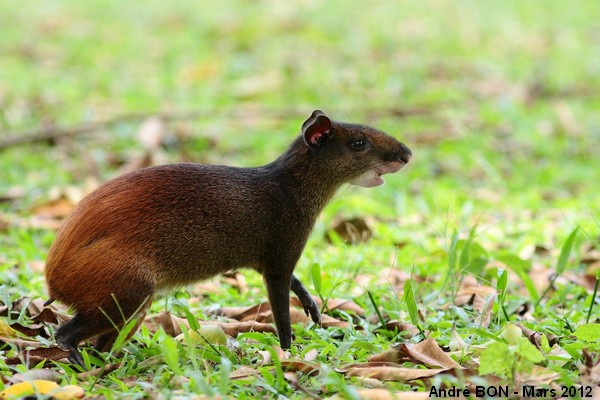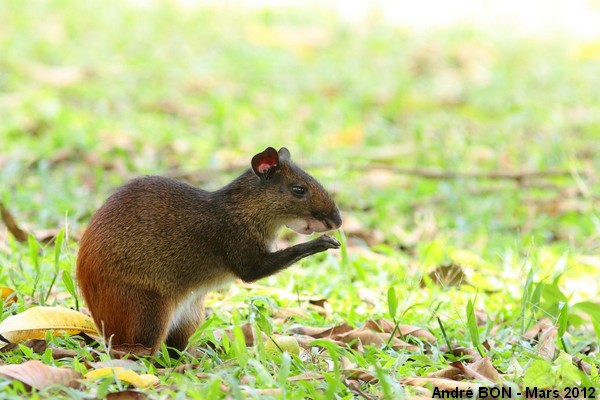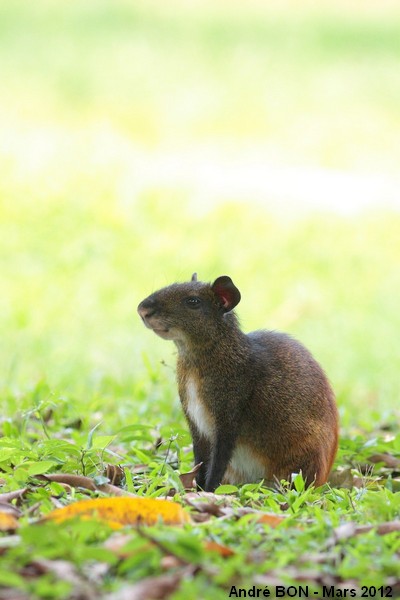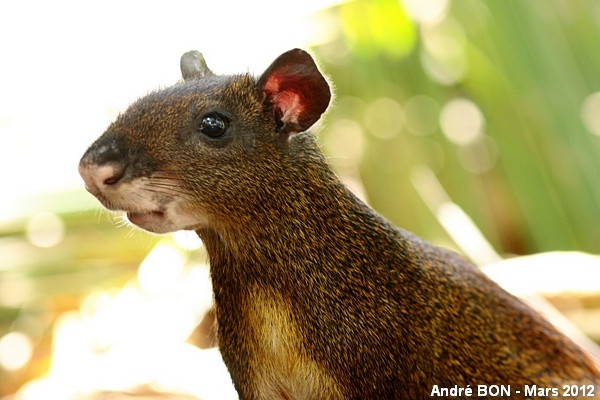



| Red-rumped Agouti (Dasyprocta leporina (Linnaeus, 1758)) |




|
|
Scientific name: Dasyprocta leporina (Linnaeus, 1758) Common name: Red-rumped Agouti Other names: Golden-rumped Agouti, Orange-rumped Agouti, Brazilian Agouti. French name: Agouti doré Family: Dasyproctidae Size: Weight: 3 to 6 kg; Body size: 48 to 64 cm. Females are larger than males. Biotope: Various habitats with dense and covered areas, primary forests and secondary forests, banks of rivers and marshes, sometimes near gardens and farms. Food: Fallen fruits and seeds picked on the ground. Red-rumped Agoutis can also eat leaves or other plant parts if fruits and seeds are not available. They bury reserves to feed during periods of shortage and thus contribute to seed dispersal. Longevity : 15 to 20 years in captivity. We are missing data about longevity in the wild. Geographic area: North-east of South America, Venezuela, Trinidad-and-Tobago, Guyana, Suriname, French Guiana, north of Brazil. It has also been introduced to the Lesser Antilles and to the Virgin Islands. |
Red-rumped Agouti is a rodent with a rather slender body and long and thin legs. The hind legs are longer than the fore legs. The fur is brownish with darker spots on the upper side. It becomes orange on the rear half. The head is rather large and the ears are almost square-shaped. The fore legs end with four toes while the hind legs end with three. Red-rumped Agoutis lives in pairs or in small family groups. There are generally two litters per year of one to three young. The Dasyprocta genus includes several species mainly described based on their geographical range. The Red-rumped Agouti is distinguished by the colour of its rear part. |
| [To know more about the Red-rumped Agouti] [Next picture] [Top] |

|
I have shot this picture on the Îles du Salut (Islands of Salvation in English, in fact on the Île Royale). Red-rumped Agoutis have been introduced to the Îles du Salut and this is certainly the best place to observe them. The orange colour of the fur on the rear half is clearly visible on this picture. |
| [To know more about the Red-rumped Agouti] [Next picture] [Previous picture] [Top] |

|
Red-rumped Agoutis feed on fruits and seeds picked on the ground. |
| [To know more about the Red-rumped Agouti] [Next picture] [Previous picture] [Top] |

|
You can see a white patch on the underside of the body. The ears are square-shaped with rounded corners. |
| [To know more about the Red-rumped Agouti] [Previous picture] [Top] |

|
Red-rumped Agoutis have been much more discreet and shy in the other parts of French Guiana that I have visited. In fact this is because they are hunted for their very appreciated meat. The ease of approach of Red-rumped Agoutis on the Îles du Salut shows that they are not hunted here. |